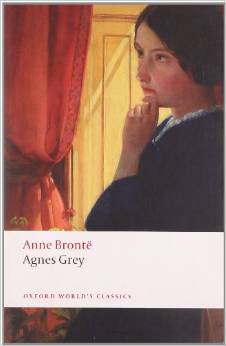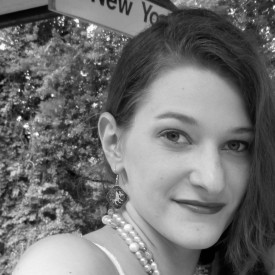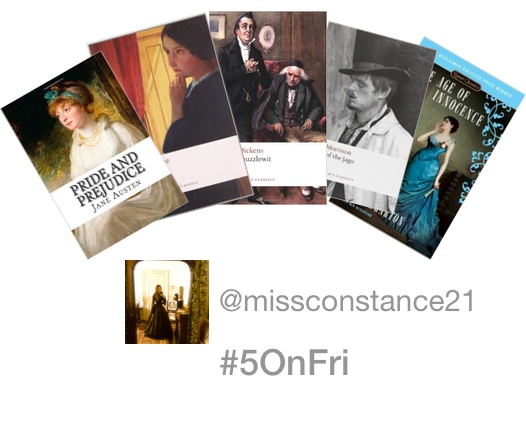If you’re like me, this holiday season you’ll probably see at least one version of Charles Dickens’s A Christmas Carol, and if you’re really like me, this might send you into a spiral of Victorian nostalgia.
Well, good news! The nineteenth century saw the rise of the novel, so there are plenty of excellent books out there to help you immerse yourself in the era.
I’ve compiled a list of some of my favorites that, on top of being excellent stories, speak to some of the major concerns of the day—with a particular focus on the experience of women. Consider this your Victorian starter kit.
5 Victorian Novels for the Novice Victorian Reader
 Pride and Prejudice
Pride and Prejudice
By Jane Austen
Well, where else was I going to start? Though not technically Victorian—coming at the tail-end of the Regency period—Pride and Prejudice is for most women, the gateway drug to the three-volume novel. It makes my list because it introduces the themes that run throughout women’s literature for the next hundred or so years: society with a capital “S,” marriage for love vs. marriage as transaction, and the very real fears that threatened single women.
For those of you who haven’t seen the six-hour BBC extravaganza or the glory that is the Keira Knightley version, Pride and Prejudice is the story of Elizabeth Bennet and the women around her, as they navigate society, morality, and a world in which only men can inherit. It’s also the story of Mr. Darcy and the men around him endeavoring to do those exact same things. Amidst the backdrop of England’s landed gentry, there’s true love, scandal, witty repartee, and one of the best stories the English language has to offer.
 Agnes Grey
Agnes Grey
By: Anne Brontë
It’s a sad fact that Anne Brontë doesn’t get anywhere near as much attention as she deserves, and neither does her semi-autobiographical novel Agnes Grey. Agnes Grey has been described as a seminal work of social commentary, and is a very realistic account of the titular character’s experience as a governess for well-to-do families. In Victorian England, the “respectable” options for a girl with a good name but no cash were basically marriage or teaching, and Agnes Grey provides a much more truthful representation of what that meant for real women than other, more popular governess novels might lead you to believe (I’m looking at you, Jane Eyre).
Agnes Grey gives us a look into nineteenth-century teaching methods, childcare (including a fascinating instance of caring for a child who pretty clearly has a behavior disorder), poverty, flirtatiousness, motherhood, happy marriages and unhappy ones. And on, and on. Perhaps it’s not the most exciting book on the list, but taken as a contemporary look into its time, Agnes Grey speaks volumes about the era and the author.
 Martin Chuzzlewit
Martin Chuzzlewit
By: Charles Dickens
Martin Chuzzlewit is one of my man Dickens’s lesser known novels, which I find strange, because these are some of his most memorable characters. Dickens is famed for his complicated, interwoven plotlines, and his wonderful use of coincidence and sentimentality, and in these regards, Martin Chuzzlewit doesn’t disappoint. Though very difficult to sum up in anything less than a page, the novel explores the theme of selfishness through a cast of characters that crosses social, gender, cultural, and continental divides.
I particularly recommend this story for its biting take on Americans and the United States, and also just for the character of Mark Tapley (who thinks one there’s only credit in being cheerful if you’re in a shitty situation). But the portrayal of the female characters is the reason this book makes my list. There’s a jilted and bitter spinster; a young women trapped in an abusive marriage; an impoverished beauty; an alcoholic nurse; a governess; a barkeep; and many others, all of whom are riveting characters in their own right. Yet together they illustrate the experiences of women across the Victorian spectrum, and offer a look into the many different positions a woman could occupy, both inside and outside of the home.
 A Child of the Jago
A Child of the Jago
By: Arthur Morrison
Now we cross to the underbelly of Victorian society, and we enter the London slums at the turn of the century. Child of the Jago follows Dicky Perrot, a young boy from a fictionalized quarter of the East End, as he tries and fails to leave his world of crime, poverty, and hunger behind in search of a respectable way of life.
Similar to the works of Dickens—just shorter and with only a smattering of sentimentality—this isn’t just Dicky Perrot’s story. It’s also a look into this community of prostitutes and murderers, pawnbrokers and thieves, drunkards and their wives, absent mothers and their children. It’s a tragic look into a world that women of society would have laughed at (Agnes Grey), pitied or campaigned for (as seen in another of Dickens’ works: Bleak House), or would have been sheltered from entirely (Pride and Prejudice).
 The Age of Innocence
The Age of Innocence
By: Edith Wharton
Edith Wharton’s masterpiece, The Age of Innocence examines upper class New York during the Gilded Age. This is a world of lavish dinner parties, old money and new money, and where appearance—particularly the avoidance of scandal—is everything. The Age of Innocence is, in short, the story of happily betrothed socialite Mr. Newland Archer and the love for the independent “foreigner” Ellen Olenski that disillusions him. This novel haunted me when I first read it seven years ago, and it still retains its power today.
I like this story as a contrast to the others on this list, as it is the husband who is trapped in a loveless marriage and who opposes the frivolities of society. It presents a man’s take on the behavior expected of young ladies, as well as a critique of the world and options open to men. It also offers exciting insight into a growing New York City, fashion, cuisine, the importance of perception versus reality, and an American view of Europe.
……………………..
 Constance Renfrow is an editor at Three Rooms Press; an editor and publishing consultant at constancerenfrow.com; and a regular fixture at the Merchant’s House Museum in NYC. Her fiction and poetry is published or forthcoming in Petrichor Machine, Two Cities Review, Denim Skin, and the anthology Magical, and she writes features for Rapportage and CityElla. She is absolutely in love with the Victorian era, so she’s naturally working on her three-volume novel, when she’s not blogging at 21stcenturyvictorian.com.
Constance Renfrow is an editor at Three Rooms Press; an editor and publishing consultant at constancerenfrow.com; and a regular fixture at the Merchant’s House Museum in NYC. Her fiction and poetry is published or forthcoming in Petrichor Machine, Two Cities Review, Denim Skin, and the anthology Magical, and she writes features for Rapportage and CityElla. She is absolutely in love with the Victorian era, so she’s naturally working on her three-volume novel, when she’s not blogging at 21stcenturyvictorian.com.







